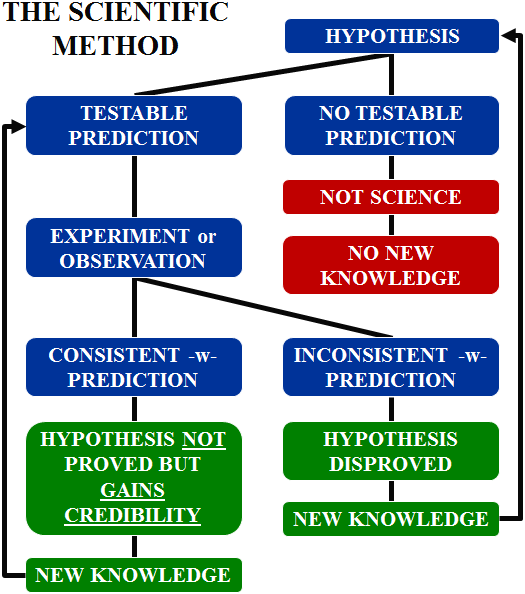
2.4 Galilean Revolution
Pre-Lecture Reading 2.4
Video Lecture
Supplementary Notes
Scientific Method
-
•
See the Scientific Method.
-
•
Something needs to be explained. A hypothesis is made.
-
•
Does the hypothesis make a testable prediction?
-
•
If not, it is not a scientific hypothesis. No new knowledge can be gained.
-
•
If so, design an experiment or observation to test the prediction.
-
•
If the result is inconsistent with the prediction, the hypothesis is wrong. This is new, useful knowledge! Make a new hypothesis.
-
•
If the result is consistent with the prediction, the hypothesis is not necessarily right, but gains credibility. This is new, useful knowledge! What other testable predictions does the hypothesis make? Design more experiments or observations to also test these predictions.
-
•
The power of the scientific method is that it can eliminate bad ideas with a single test. It lends more and more credibility to ideas that pass more and more tests, but it can never prove any idea absolutely.
-
•
In short, the scientific method is truth by elimination. Or rather, a path to truth by elimination. The downside is you never know if you have reached the final destination, or just the next in a series of better and better approximations thereof. But at least you know that it will lead you in the right direction (or rather, not let you stray too far in the wrong direction). Although not perfect, this has been good enough to build modern civilization. Thank you, scientific method.
-
•
Final point: Anyone who believes something that is demonstrably false does not believe in the scientific method. And consequently should turn in their iPhone.
Galileo Galilei (1564-1642)
-
•
See Galileo Galilei.
-
•
First modern scientist, in the sense that he pioneered the scientific method
-
•
Four Revolutionary Discoveries (1609)
-
•
Moon not perfectly smooth. Contradicted church teachings
-
•
Sun not unblemished. Contradicted church teachings
-
•
Jovian moons. Contradicted the geocentric model, in which everything orbits Earth, and hence church teachings
-
•
Venusian phases. Contradicted the prediction of the geocentric model, matched the prediction of the heliocentric model, and consequently contradicted church teachings
-
•
Wrote Sidereus Nuncius (The Starry Messenger) (1610)
-
•
Wrote Dialogue Concerning the Two Chief World Systems, also known as Dialogue (1632)
Lab Link
Material presented in this unit is related to material presented in Lab 3 of Astronomy 101 Laboratory: Our Place in Space.
In Lab 3: Galilean Revolution, we:
-
•
Measure a moon's orbit around a planet.
-
•
Use this information to measure the mass of the planet.
-
•
Measure the phase and angular diameter of Venus.
-
•
Use this information to distinguish between the geocentric and heliocentric models of the universe.
Video Lab Summary
Exercises
Assignment 2

